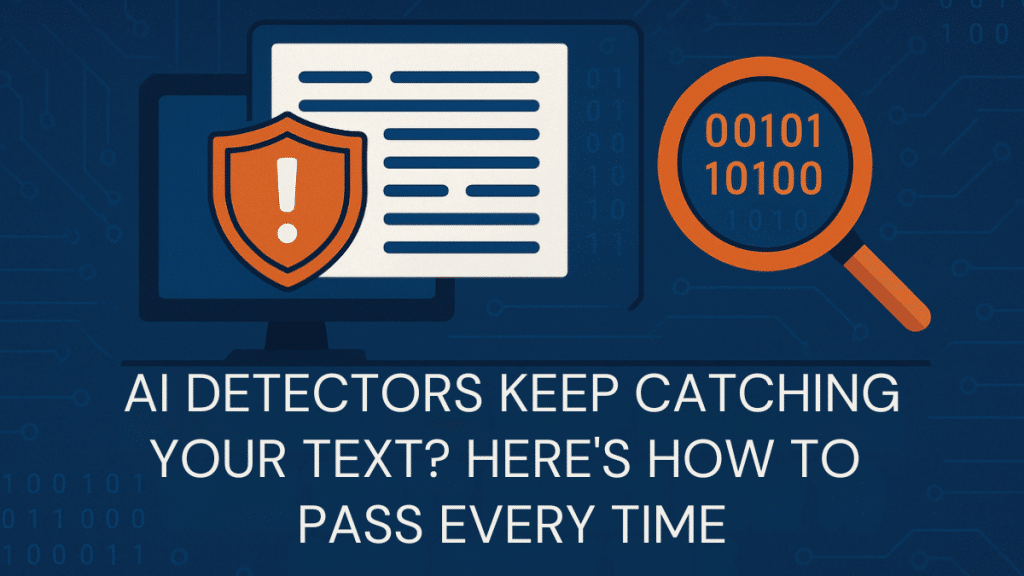Introduction
If you’ve ever run your writing through an AI detection tool and watched it light up like a warning sign, you’re not alone. AI detectors are getting smarter in 2025, catching text that even looks like it could have been generated by artificial intelligence. For writers, marketers, students, and businesses, this can be frustrating — especially when the text is polished but still gets flagged.
The good news? Passing AI detection isn’t about trickery; it’s about AI humanization — making your writing feel genuinely human. Let’s walk through why detectors flag your text and how you can pass them every time without sacrificing quality.
1. Why AI Detectors Flag Your Text
AI detectors work by analyzing patterns that are common in machine-generated writing. The most common triggers include:
- Overly consistent sentence length – Real human writing tends to have short bursts mixed with longer thoughts.
- Predictable word choice – AI often repeats certain “safe” phrases.
- Lack of personal context – No lived experience, opinions, or sensory details.
- Generic structure – Reads like a textbook or template, rather than a conversation.
Most AI tools produce text that is grammatically perfect but stylistically “flat.” Detectors pick up on this lack of variation and authenticity.
2. The “Pass Every Time” AI Humanization Process
Step 1: Identify AI-Heavy Sections
Before editing, scan your draft with an AI detection tool to see which sections score the highest for AI-likelihood. Focus on rewriting those.
Step 2: Break the Rhythm
Humans write with variety. Use a mix of:
- Short, punchy sentences.
- Long, winding explanations.
- Occasional one-word emphasis.
Step 3: Add Human Voice
Inject personality into your text:
- Use idioms and expressions that fit the context.
- Reference real-world experiences or events.
- Ask rhetorical questions.
Step 4: Replace Generic AI Statements
AI often produces broad statements like, “In today’s world, technology is important.” Replace them with specific, contextual information:
- Instead of “Technology is important,” say, “In 2025, over half of all online articles are AI-assisted — and readers can tell.”
Step 5: Final Polish with an AI Humanizer
Once you’ve rewritten the high-risk areas, run the text through an AI humanizer to smooth the tone, adjust flow, and re-check detection scores. This ensures the content is undetectable while keeping it natural and engaging for real readers.
3. Bonus Hacks for Staying Undetectable
- Mix in sensory language – Describe how things look, feel, or sound.
- Vary paragraph length – Avoid walls of text or overly short blocks.
- Inject occasional imperfections – Small stylistic quirks make writing feel alive.
- Update facts and references – AI often uses outdated data; make it current.
4. Keep AI Humanization in Your Workflow
Instead of treating AI detection as an obstacle, think of AI humanization as part of your editorial process. This ensures that:
- Your writing resonates with real readers.
- Your content passes AI detection consistently.
- You maintain authenticity and trust with your audience.
Many professional writers and businesses now include TextFix.ai in their workflow as a dedicated AI humanizer to guarantee every piece is polished, human-sounding, and optimized for both readers and search engines.
The more naturally you integrate these habits, the less effort it will take — and the more your content will stand out in a sea of machine-written text.
Final Thoughts
AI tools are powerful assistants, but passing AI detection means showing the human side of writing: voice, variety, and genuine insight. By following this process, you’ll not only avoid detection flags — you’ll create content that people want to read.
